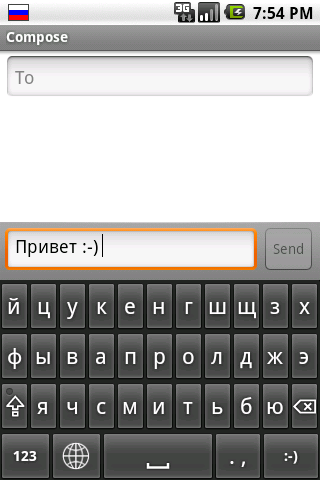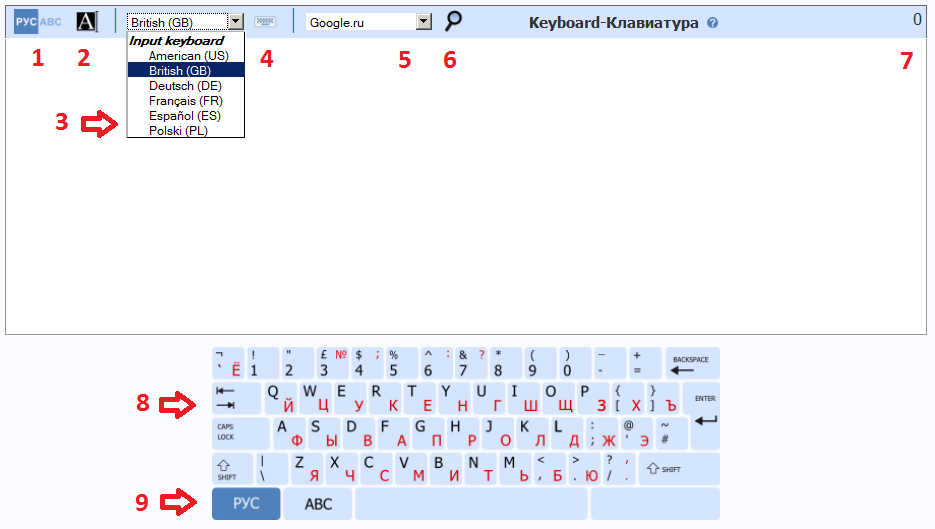

By using easy Russian typing keyboard, You can write Russian text and fonts for android russian. English to Russian typing keyboard for android mobiles has also text font option use to select favorite text style of Roman Russian. Russian language keyboard has advanced features like dictionary option use to save desire word that will use mostly while type in easy Russian typing keyboard app. This is normally spelled ⟨ ы⟩ (the hard counterpart to ⟨ и⟩) unless this vowel occurs at the beginning of a word, in which case it remains ⟨ и⟩.Russian Keyboard for android is multilingual keyboard in search store for typing Russian language text. While ⟨ и⟩ is also a soft vowel, root-initial /i/ following a hard consonant is typically pronounced as.

Until the 1918 reform, no written word could end in a consonant: those that end in a "hard" consonant in modern orthography then had a final ⟨ ъ⟩. Its original pronunciation, lost by 1400 at the latest, was that of a very short middle schwa-like sound, likely pronounced or. Today it is used mostly to separate a prefix ending with a hard consonant from the following root. The hard sign (⟨ ъ⟩) acts like a "silent back vowel" that separates a succeeding "soft vowel" (⟨ е, ё, ю, я⟩, but not ⟨ и⟩) from a preceding consonant, invoking implicit iotation of the vowel with a distinct /j/ glide. (For more information, see Non-vocalized letters.) The reform eliminated the use of Ъ in this context, leaving it the least common letter in the Russian alphabet. This is because before the 1918 reform, any word ending with a non- palatalized consonant was written with a final Ъ - e.g., pre-1918 вотъ vs. ⟨Ъ⟩ used to be a very common letter in the Russian alphabet. In written Russian, ⟨ё⟩ is often replaced by ⟨е⟩. The least common consonant in the Russian alphabet.

The most common consonant in the Russian alphabet. In addition, Ё is often replaced by Е this makes Е even more common. The frequency of characters in a corpus of written Russian was found to be as follows: Rankīy comparison, 'e' in English appears about 13% in texts.įoreign words sometimes use Е rather than Э, even if it is pronounced e instead of ye. ( August 2014) ( Learn how and when to remove this template message) Unsourced material may be challenged and removed. Please help improve this article by adding citations to reliable sources. This section needs additional citations for verification. However, in modern Russian six consonant phonemes do not have phonemically distinct "soft" and "hard" variants (except in foreign proper names) and do not change "softness" in the presence of other letters: /ʐ/, /ʂ/ and /ts/ are always hard /j/, /ɕː/ and /tɕ/ are always soft. A soft sign indicates ⟨ Ь⟩ palatalization of the preceding consonant without adding a vowel. If consonant letters are followed by vowel letters, the soft/hard quality of the consonant depends on whether the vowel is meant to follow "hard" consonants ⟨ а, о, э, у, ы⟩ or "soft" consonants ⟨ я, ё, е, ю, и⟩ see below. ^† An alternative form of the letter El ( Л л) closely resembles the Greek letter lambda ( Λ λ).Ĭonsonant letters represent both "soft" ( palatalized, represented in the IPA with a ⟨ ʲ⟩) and "hard" consonant phonemes. Silent, palatalizes the preceding consonant (if phonologically possible) Silent, prevents palatalization of the preceding consonant

Similar to a double "sh" as in pu sh ships Initially an old variant of the Bulgarian alphabet, it became used in the Kievan Rus' since the 10th century to write what would become the Russian language. It comes from the Cyrillic script, which was devised in the 9th century for the first Slavic literary language, Old Slavonic. The Russian alphabet ( ру́сский алфави́т, russkiy alfavit, or ру́сская а́збука, russkaya azbuka, more traditionally) is used to write Russian words. For the distinction between, / / and ⟨ ⟩, see IPA § Brackets and transcription delimiters. For an introductory guide on IPA symbols, see Help:IPA. This article contains phonetic transcriptions in the International Phonetic Alphabet (IPA).


 0 kommentar(er)
0 kommentar(er)
